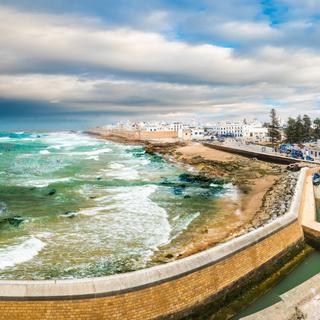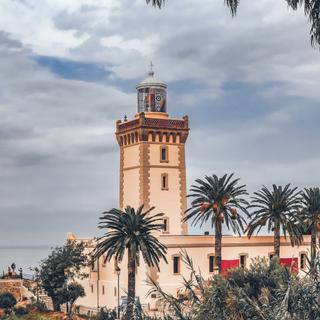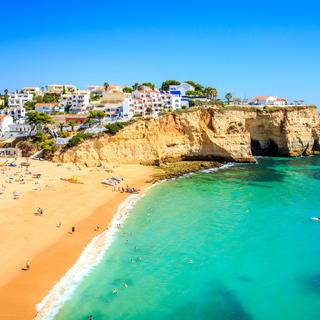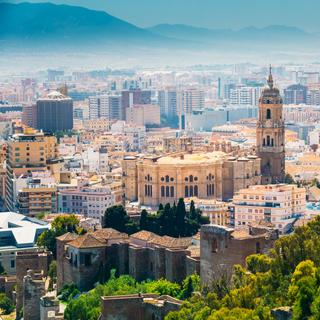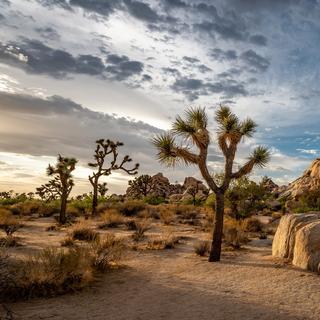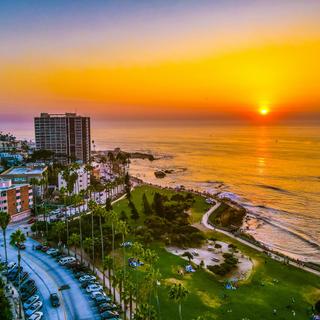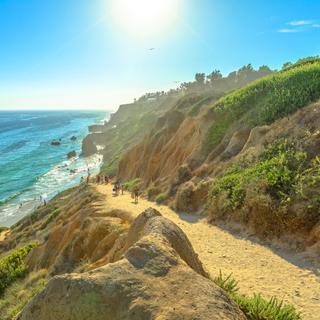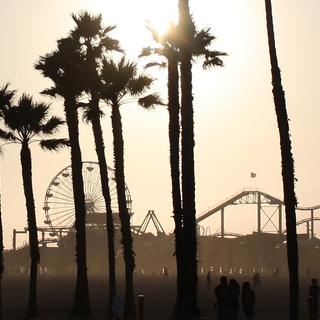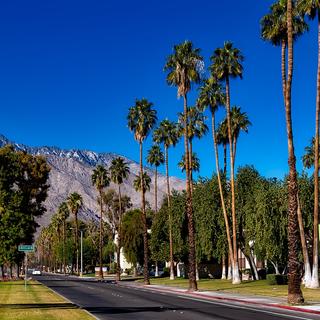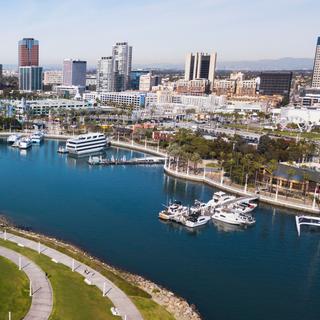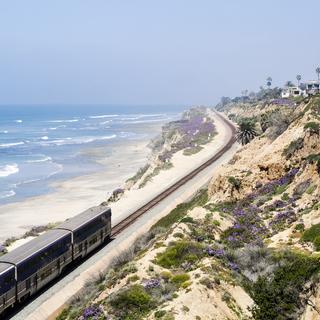
Santa Barbara weather and climate

Santa Barbara weather and climate
Day
26 °C
Night
15 °C
Sea
18 °C
Precipitation
1 mm
in month
Rainy days
0 days
in month
Daylight
13 hours
average
Sunshine
10 hours
average
Humidity
75 %
Weather charts for Santa Barbara
Destinations nearby and activities
Destinations nearby
Activities in Santa Barbara

Find more destinations like this
Destinations with similar weather to Santa Barbara
Other destinations in California - South coast
Closest cities for Santa Barbara
Last week's weather in Santa Barbara
The average temperature for the week of 7 July 2025 - 13 July 2025 was 29 °C (84 °F) during the day and 13 °C (55 °F) during the night. Both the daily and night temperatures in Santa Barbara are above the long-term average, which is around 25 °C (77 °F) and 15 °C (59 °F) respectively. The hottest days of the week were Thursday and Wednesday in the middle of the week. The average temperatures during different times of day (local time) were following: 7am 14 °C (57 °F), 10am 19 °C (66 °F), 1pm 26 °C (79 °F), 4pm 28 °C (82 °F), 7pm 21 °C (70 °F), 10pm 17 °C (63 °F).
The week had 7 days without rain. During the whole week, total of 0 mm (0.00 in) of precipitation was observed, which is roughly same as the long term average for Santa Barbara, which is 0 mm (0.00 in). The average cloud coverage during the daytime (from dawn to dusk) was 34 %. There was a meteorological observation of mist and fog.
The wind's speed averaged 2.2 m/s. The air pressure varied between 1010 hpa and 1019 hpa. On average, the air humidity in Santa Barbara was 73 %.
During the daytime (from dawn to dusk), there were in average: 9 hours clear skies, 2 hours partially overcast skies and 4.5 hours overcast skies. Average time of sunrise was 05:54, average time of sunset was 20:13.
Weather overview for Santa Barbara
Weather overview
Characterized by tropical weather patterns, Santa Barbara in the United States of America offers a range of temperatures from 18 °C (65 °F) to 26 °C (79 °F) during daytime from the coldest month of January to the warmest in August. Nightly temperatures vary between 6 °C (44 °F) in January and 15 °C (59 °F) in August. Ocean temperatures fluctuate from 14 °C (57 °F) in April to 18 °C (65 °F) during August's peak. The driest month is July, averaging a mere 0 days of rainfall, while February is conversely the wettest with 7 days of precipitation.
January weather
In Santa Barbara, January witnesses the lowest daytime temperatures of the year while the sea temperature also continues its decline steadily, clocking in at 14 °C (58 °F). The increase in the number of rainy days is noted, reaching 6 days, with the rainfall volume likewise growing in comparison to the prior month to a total of 97 mm (3.80 in). The minimal night temperatures are recorded, sitting at a chilly 6 °C (44 °F), and humidity levels drop to their lowest point at 67 %.
February weather
February sees the highest number of rainy days at 7 days in Santa Barbara, accompanied by peak rainfall volumes of 106 mm (4.17 in). A hint at warmer nights emerges with the temperature increasing slightly to 7 °C (45 °F). An upsurge in the number of sunlit hours is evident compared to the previous month, registering 7 hours.
March weather
March indicates the outset of a decrease in both the number of rainy days, now at 6 days, and the volume of rainfall, measured at 79 mm (3.09 in) in Santa Barbara. Day temperatures start to climb, reaching 19 °C (67 °F), while a parallel rise in night temperatures is noted at 8 °C (47 °F). Cloud-free hours continue their incremental ascent.
April weather
April in Santa Barbara is marked by a continued rise in day temperatures, now at 21 °C (69 °F), while the sea temperature remains at its yearly low. The decline in the number of rainy days is more pronounced, down to 3 days, and corresponding rainfall volumes also fall to 31 mm (1.21 in). Nighttime temperatures warm up to 9 °C (49 °F), and wind speeds reach their peak for the year.
May weather
As May arrives, a further increase in day temperatures to 22 °C (71 °F) is noted in Santa Barbara, alongside the inception of a rise in sea temperatures. Additionally, rainfall numbers continue their downswing, now at 9 mm (0.36 in), and the frequency of rainy days exhibits a decrease to 1 day. The transition to drier conditions is underway. Night temperatures experience an uptick, marked at 11 °C (52 °F).
June weather
The onset of the tourist season in June is accompanied by rising day temperatures, which now average 23 °C (74 °F), while sea temperatures also continue their upward trajectory. A minimal number of rainy days, tallying 1 day, and a correspondingly low volume of rainfall at 2 mm (0.08 in) denote the onset of dry conditions. The nighttime temperature rise maintains its course, now at 13 °C (55 °F).
July weather
The peak of the tourist season in July sees day temperatures ascending further to 25 °C (77 °F), while sea temperatures also hit higher marks at 18 °C (64 °F). The nadir of both rainfall frequency and volume is noted, now at 0 mm (0.01 in). The zenith of cloud-free daylight hours is likewise visible, with 11 hours being the highest recorded.
August weather
August in Santa Barbara brings about the highest day temperatures for the year, peaking at 26 °C (79 °F), and the sea also reaches its warmest at 18 °C (65 °F). The continuation of the tourist season is apparent, and a pending end to the dry period is also on the horizon. Night temperatures achieve their highest levels, now at 15 °C (59 °F). Daylight hours without clouds reduce slightly in August.
September weather
Santa Barbara experiences a continuation of the tourist season in September, while the apex of the dry season is also near. A gradual decline in day temperatures is noticeable, averaging 25 °C (78 °F), and night temperatures begin their descent, now at 14 °C (58 °F). The rise in rainy days becomes apparent, yet sunlight hours without clouds continue to diminish, tallying 9 hours.
October weather
October marks the continuation of the tourist season in Santa Barbara with witnessed reductions in day temperatures, now at 24 °C (75 °F), and nighttime temperatures following suit, recorded at 12 °C (54 °F). An increase in the volume of rainfall is noted at 17 mm (0.65 in), while the number of rainy days also creeps up, indicated by 2 days. Wind speeds hit their annual minimum.
November weather
As November commences, the gradual decrease in sea temperatures is evident at 16 °C (62 °F) in Santa Barbara. Concurrent with this, day temperatures also continue to decline, averaging 22 °C (71 °F). The upward trend in rainy days is maintained, registering 4 days, with the rise in rainfall volumes apparent at 43 mm (1.67 in). Sunlight hours reduce in parallel with earlier months, tallying 6 hours, while nighttime temperatures proceed to fall, now at 9 °C (48 °F).
December weather
December observes a further drop in day temperatures, registering at 18 °C (65 °F) in Santa Barbara, while sea temperatures also continue their downward trend, now at 15 °C (59 °F). A growing number of rainy days is apparent, climbing to 5 days, with the rain volumes persistently increasing and the shortest daylight hours of the year becoming prominent.
FAQs
What is the typical number of rainy days in January in Santa Barbara?
In January, Santa Barbara generally experiences around 6 days of rainfall.
Can I expect high humidity in Santa Barbara during February?
February typically exhibits high humidity levels, averaging about 69 %.
What can be said about the wind conditions in Santa Barbara during March?
One can expect moderate winds in March, with an average speed of 4 m/s.
What is the expected amount of sunshine in Santa Barbara during April?
Approximately 10 hours of sunshine can be anticipated in Santa Barbara for the month of April.
What is the average number of days with rainfall in May in Santa Barbara?
Santa Barbara expects to see around 1 day with rainfall in May.
With June approaching, is Santa Barbara a recommended travel destination?
Santa Barbara is highly recommended for visitors in June with infrequent rain, averaging only 1 day per month, and agreeable temperatures.
What temperature can one expect in Santa Barbara's sea waters during July?
Santa Barbara's sea temperatures in July are expected to be approximately 18 °C (64 °F).
What daytime temperatures will be typical in Santa Barbara during August?
During August, you can typically expect daytime temperatures to hover around 26 °C (79 °F) in Santa Barbara.
Is the weather in Santa Barbara comfortably warm in September?
September in Santa Barbara offers pleasant and inviting warmth, likely ensuring a comfortable stay.
Should one anticipate a wet season during October in Santa Barbara?
October doesn't typically bring a wet season to Santa Barbara; expect an average of 2 days with some rainfall.
How chilly are the nights in Santa Barbara during November?
In November, you can expect the nights in Santa Barbara to be bracingly cool, averaging around 9 °C (48 °F).
Is December considered part of the dry season in Santa Barbara?
December does not belong to the dry season; Santa Barbara sees an average of approximately 5 days of rain in this month.
